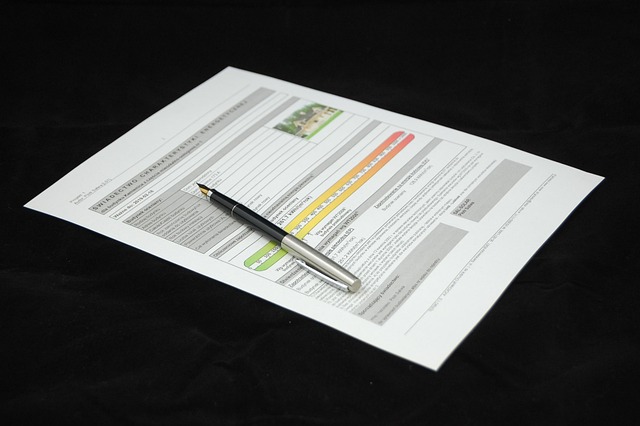In the UK, addressing linguistic and cultural diversity in education is key to student success. Traditional textbooks often fail to represent minority groups, leading to disengagement. Localized textbooks and translation services are game-changers, creating inclusive learning environments by providing resources tailored to students' cultural identities and language needs. UK Educational Textbook Translation Services employ skilled linguists to adapt texts, enhancing accessibility and fostering a diverse, stimulating learning atmosphere. This approach improves student engagement, academic performance, and prepares them for multicultural societies. A five-step implementation process includes identifying needs, sourcing translations, pilot testing, teacher training, and feedback review. Case studies show positive outcomes, proving the value of these services in transforming education.
In the diverse landscape of UK education, engaging students with relevant and culturally sensitive materials is paramount. This article explores the transformative power of UK educational textbooks translation services in meeting this need. We delve into the challenges posed by traditional textbooks in a heterogeneous classroom and highlight the significant benefits of using translated educational resources. Through a step-by-step guide and real-world case studies, we uncover effective strategies for schools to integrate localized textbooks, fostering an inclusive learning environment.
- Understanding the Need for Localized Textbooks in UK Education
- Challenges of Traditional Textbooks in a Diverse Classroom
- Benefits of Using Translated Educational Resources
- The Role of Professional Translation Services in School Curricula
- Ensuring Accuracy and Cultural Sensitivity in Textbook Translations
- Integrating Localized Textbooks: A Step-by-Step Guide for Schools
- Case Studies: Successful Implementation of UK Educational Textbook Translation
Understanding the Need for Localized Textbooks in UK Education

In the diverse landscape of the UK education system, recognizing and catering to the linguistic and cultural needs of all students is paramount. The traditional approach to textbooks often overlooks the significance of localized resources, particularly for ethnic minority and non-English speaking pupils. This gap in representation can lead to disengagement and a sense of isolation among these students, hindering their academic progress and overall educational experience.
Localized textbooks offer a transformative solution, bridging the cultural divide and fostering inclusivity. UK educational institutions should embrace translation services to adapt existing resources or create new ones tailored to the specific languages and backgrounds of their student bodies. Such an initiative not only enhances learning but also empowers students by providing them with materials that resonate with their everyday lives and cultural identities.
Challenges of Traditional Textbooks in a Diverse Classroom

In a diverse classroom, traditional textbooks often present significant challenges. One of the primary issues is the language barrier; many students in the UK come from various linguistic backgrounds, and using standardized textbooks can exclude or confuse those for whom English is not their first language. This is especially true when the content involves complex concepts or specialized terminology that may not have direct translations or might be misunderstood due to cultural differences. Moreover, one-size-fits-all textbooks struggle to cater to different learning styles and preferences, potentially demotivating students who don’t engage with the material presented.
Additionally, traditional textbooks may fail to represent the cultural tapestry of a diverse classroom, leading to disconnection among students. They often lack inclusive perspectives, which can negatively impact minority groups’ self-esteem and sense of belonging. To overcome these hurdles, UK educational institutions are increasingly recognizing the need for localized textbook solutions, such as translation services, that ensure every student has access to relevant, engaging, and culturally responsive learning materials.
Benefits of Using Translated Educational Resources

In today’s globalized world, utilizing translated educational resources offers a myriad of advantages for students and educators alike. One of the key benefits is enhanced accessibility; UK Educational Textbooks Translation Services play a vital role in breaking down language barriers, ensuring that all learners, regardless of their native tongue, can access and engage with the curriculum on equal footing. This inclusivity fosters a more diverse and enriching learning environment, where students from various linguistic backgrounds can contribute unique perspectives.
Additionally, translation services allow for a more localized approach to education. By adapting textbooks to specific regions or languages, educators can tailor content to cultural nuances and regional contexts, making abstract concepts more tangible and relatable for students. This localization not only improves comprehension but also fosters a deeper connection to the learning material, encouraging active participation and critical thinking.
The Role of Professional Translation Services in School Curricula

In today’s globalized world, education systems must adapt to cater to diverse student bodies. One effective strategy is the integration of localized textbooks, which allows for a more inclusive learning environment. This process often requires professional translation services tailored specifically for UK educational textbooks. These services play a pivotal role in ensuring that content not only maintains its academic integrity but also resonates with students from various cultural backgrounds.
UK educational textbooks translation services employ skilled linguists who understand the nuances of both source and target languages, as well as educational terminology. This specialized knowledge is crucial for accurately conveying complex concepts while respecting cultural sensitivities. By utilizing these services, schools can offer materials that are not only accessible but also enrich students’ understanding of diverse perspectives, fostering a deeper appreciation for global issues and multiculturalism.
Ensuring Accuracy and Cultural Sensitivity in Textbook Translations

When localizing textbooks for a specific region or culture, accuracy and cultural sensitivity are paramount. Translators must go beyond word-for-word conversion, understanding that educational content should reflect the target community’s nuances and values. This involves delving into cultural context, ensuring terms and concepts resonate with students while maintaining academic integrity. UK Educational Textbook Translation Services play a vital role here, employing professionals who not only grasp the language but also have an innate sense of cultural appropriateness.
The process often includes extensive research, consultation with local educators, and rigorous proofreading to catch any misinterpretations that might inadvertently perpetuate stereotypes or cause confusion. It’s about creating resources that are not just linguistically correct but also culturally relevant, fostering a deeper engagement from students who can then connect more meaningfully with their educational material.
Integrating Localized Textbooks: A Step-by-Step Guide for Schools

Integrating localized textbooks into the curriculum is a powerful way to engage students and enrich their learning experience, especially in diverse educational settings across the UK. This process involves a strategic approach to ensure cultural relevance and accessibility for all learners. Here’s a step-by-step guide for schools looking to implement this practice:
1. Identify Needs and Goals: Begin by assessing your school’s specific requirements. Determine whether you aim to cater to students from various linguistic backgrounds or want to offer a more inclusive learning experience for those studying in their second language. This initial step is crucial, as it guides the selection of appropriate translation services. Schools can tap into UK Educational Textbook Translation Services to professionalize this process and ensure high-quality results.
2. Source Quality Translations: Engaging reputable UK educational textbook translation services is essential. Look for providers specializing in academic translations, who understand the nuances of educational content. These experts will adapt the textbooks not just linguistically but also culturally, ensuring the translated material aligns with the target region’s context and educational standards. This step guarantees that students receive accurate, relevant, and engaging study materials.
3. Pilot Programs: Start with a trial run by implementing localized textbooks in specific classes or grades. This approach allows teachers to gather feedback from both educators and students regarding the effectiveness of the translated resources. It also provides an opportunity to identify potential challenges and make necessary adjustments before full-scale implementation.
4. Teacher Training: Provide training sessions for teaching staff to familiarize them with the new textbooks and translation methodologies. These sessions should cover strategies for incorporating localized content into lessons, addressing any cultural references or idiomatic expressions that might require adaptation, and promoting inclusive teaching practices.
5. Regular Review and Feedback: Establish a feedback mechanism to assess student engagement and learning outcomes over time. Regularly reviewing the impact of localized textbooks will help identify areas for improvement and ensure the materials remain relevant and effective in meeting educational goals.
Case Studies: Successful Implementation of UK Educational Textbook Translation

In recent years, the successful implementation of UK educational textbook translation services has showcased the profound impact of localized resources on student engagement and academic performance. Several case studies highlight how high-quality translations can bridge the gap between cultural contexts, making learning materials more accessible and relevant to diverse student populations. For instance, a leading UK publishing house collaborated with professional translators to adapt popular science texts for use in international schools across Europe. The result was a set of textbooks that not only maintained the integrity of the original content but also incorporated regional references and examples pertinent to students’ local environments. This approach led to increased student interest and participation, as seen through improved exam results and positive feedback from teachers.
These successful implementations underscore the importance of tailored translation services in education. By engaging specialized translators who understand both the source material and the target culture, UK educational textbook publishers can ensure that translated materials are not just accurate but also culturally sensitive and engaging. This is particularly crucial in today’s globalized world where classrooms are becoming increasingly diverse. Such initiatives not only support inclusive learning environments but also prepare students for future interactions in a multicultural society, fostering their ability to navigate and contribute to different cultural contexts.
Localized textbooks play a pivotal role in enhancing educational experiences, especially within the diverse UK classroom. By employing professional translation services, schools can overcome challenges posed by traditional textbooks and foster an inclusive learning environment. This article has explored the benefits of translated educational resources, highlighting their potential to improve engagement and understanding among students from various linguistic backgrounds. Through step-by-step guides and real-world case studies, it’s evident that integrating UK educational textbook translation services is a powerful strategy to support all learners, ensuring they have access to accurate, culturally sensitive, and relevant educational materials.
